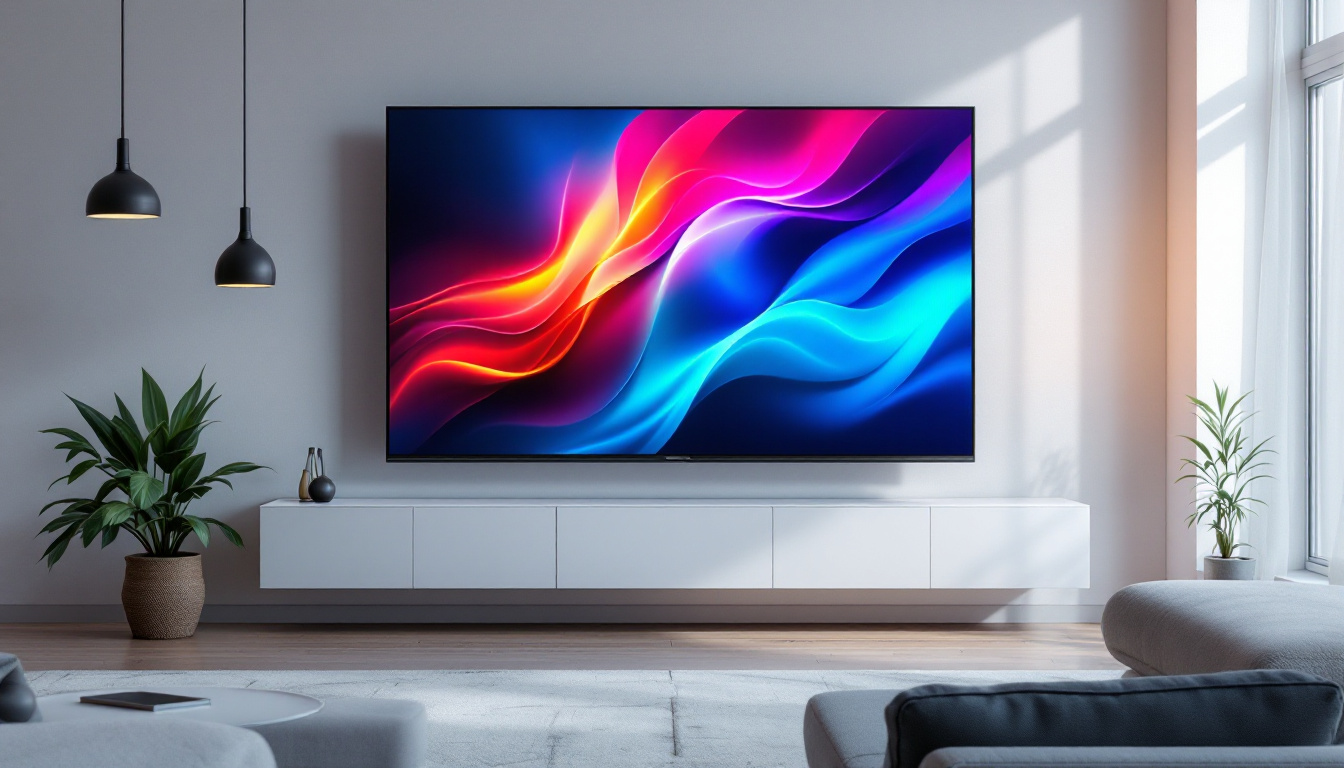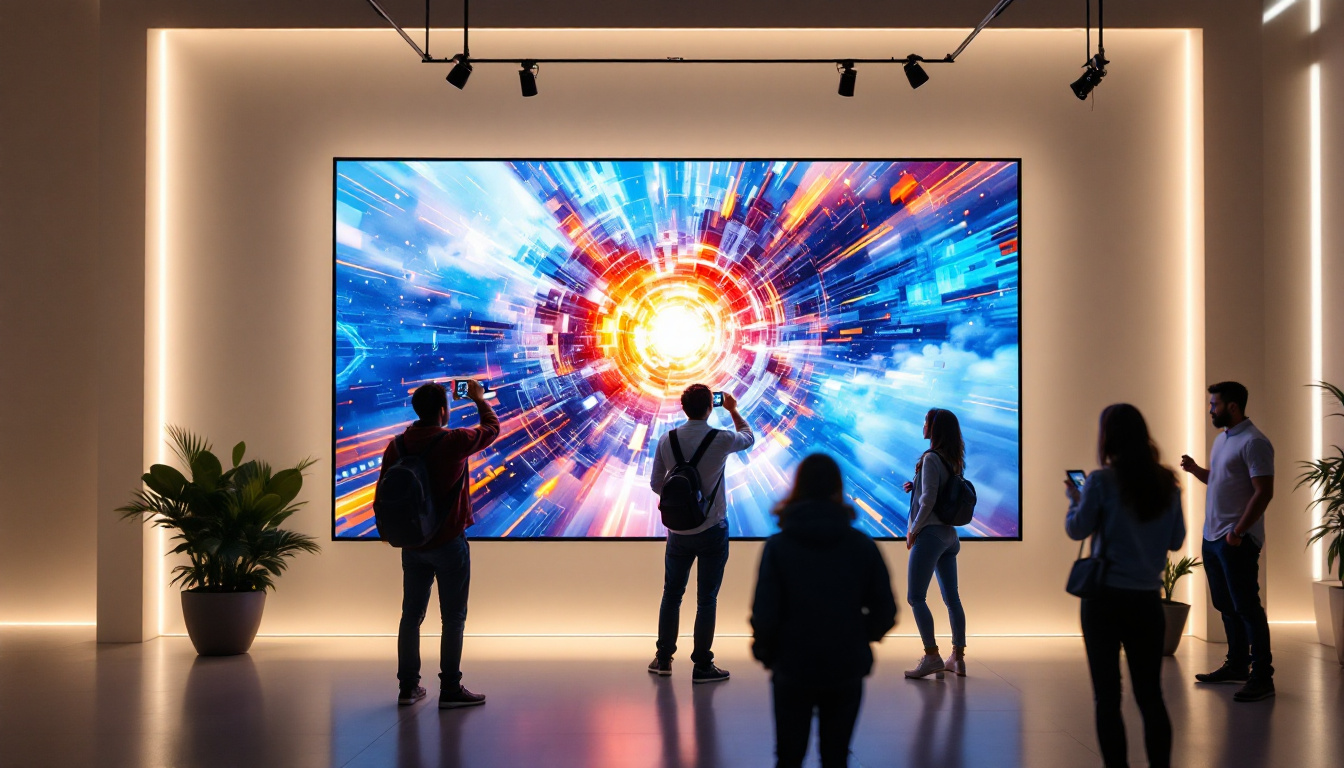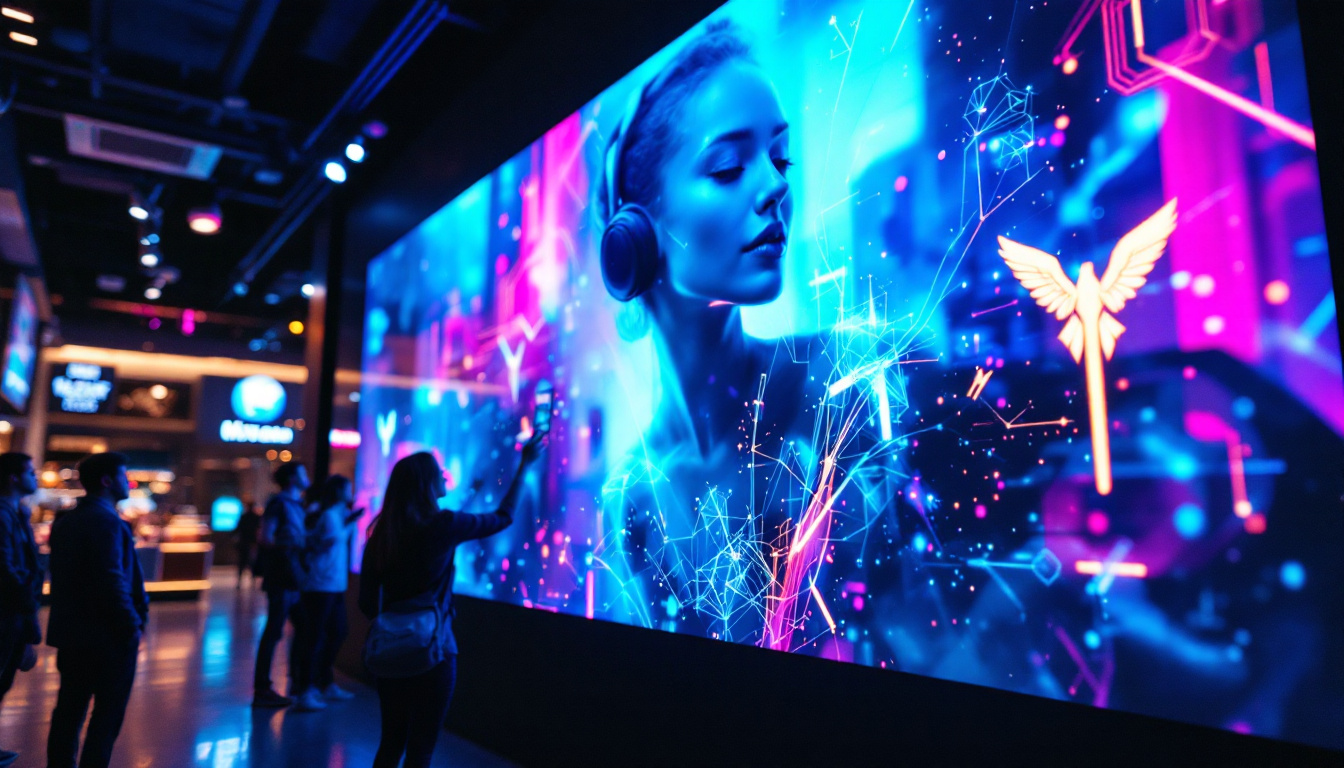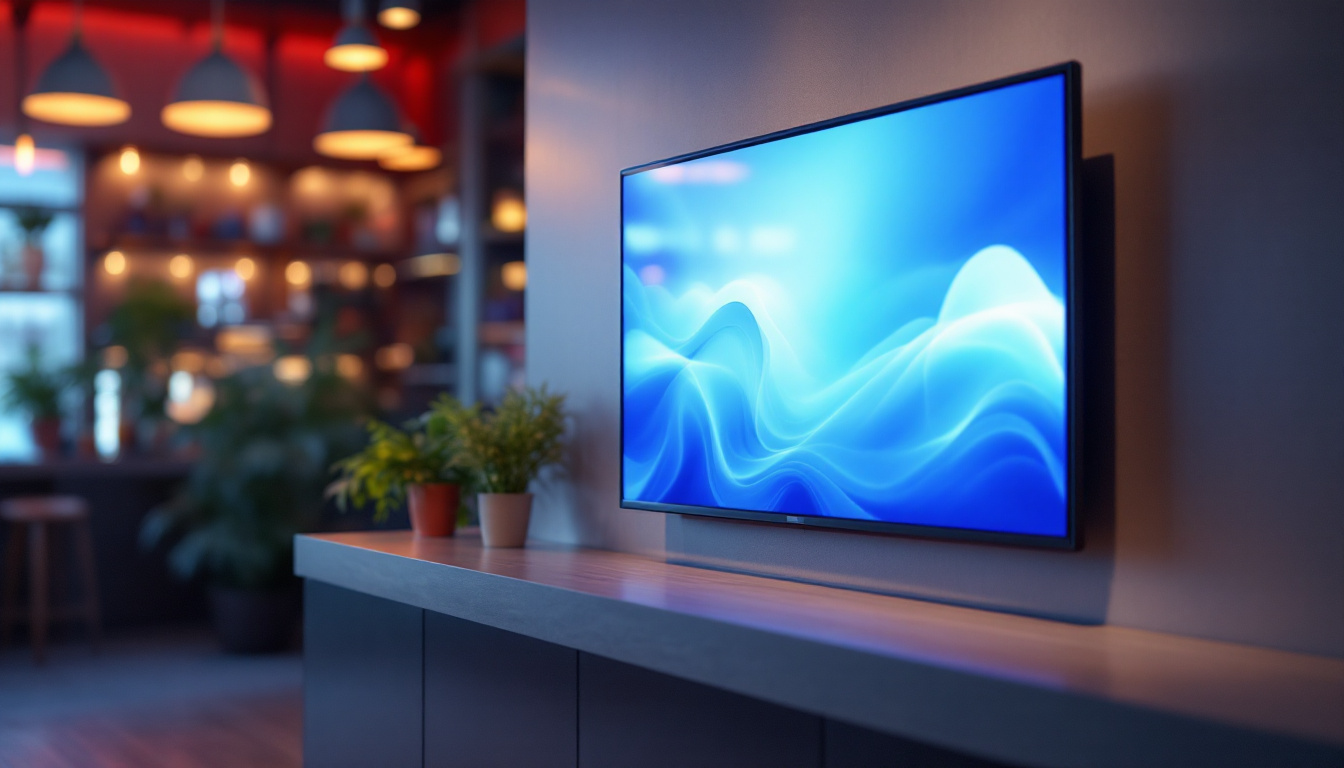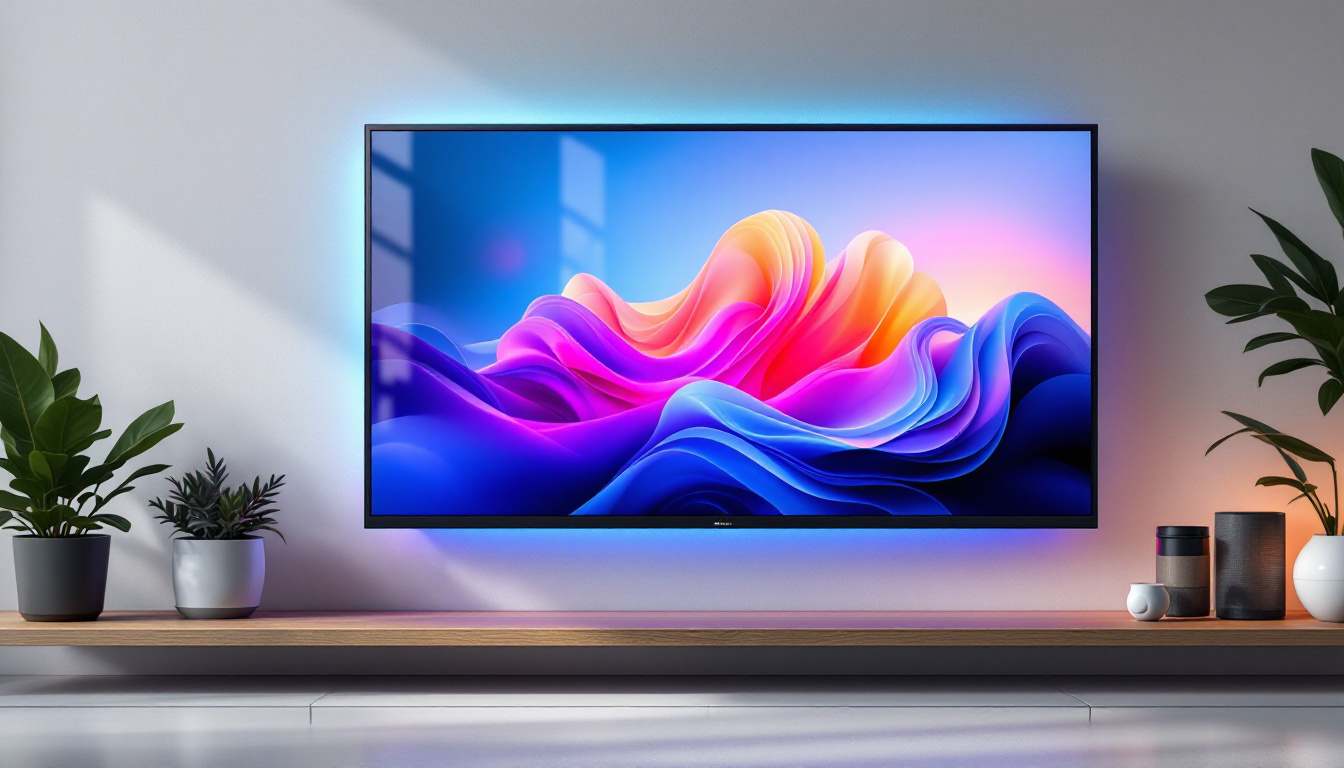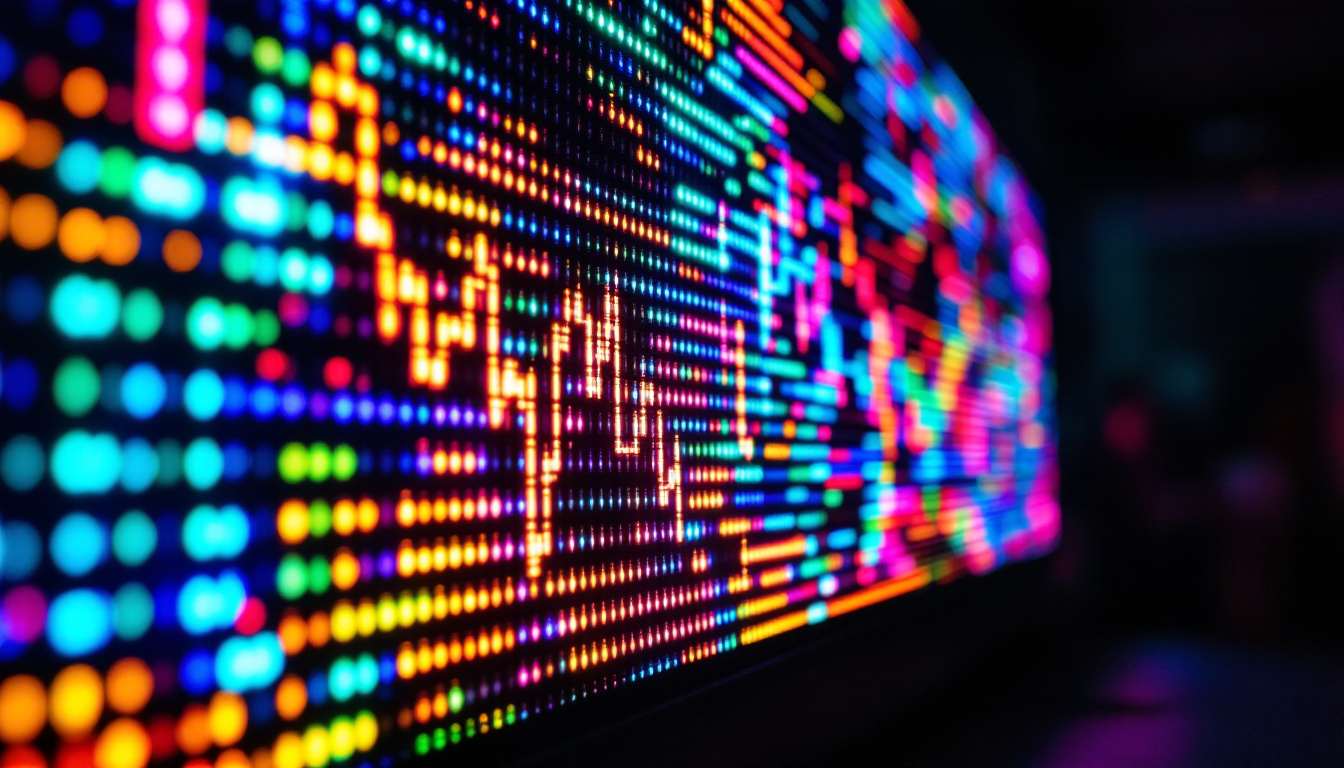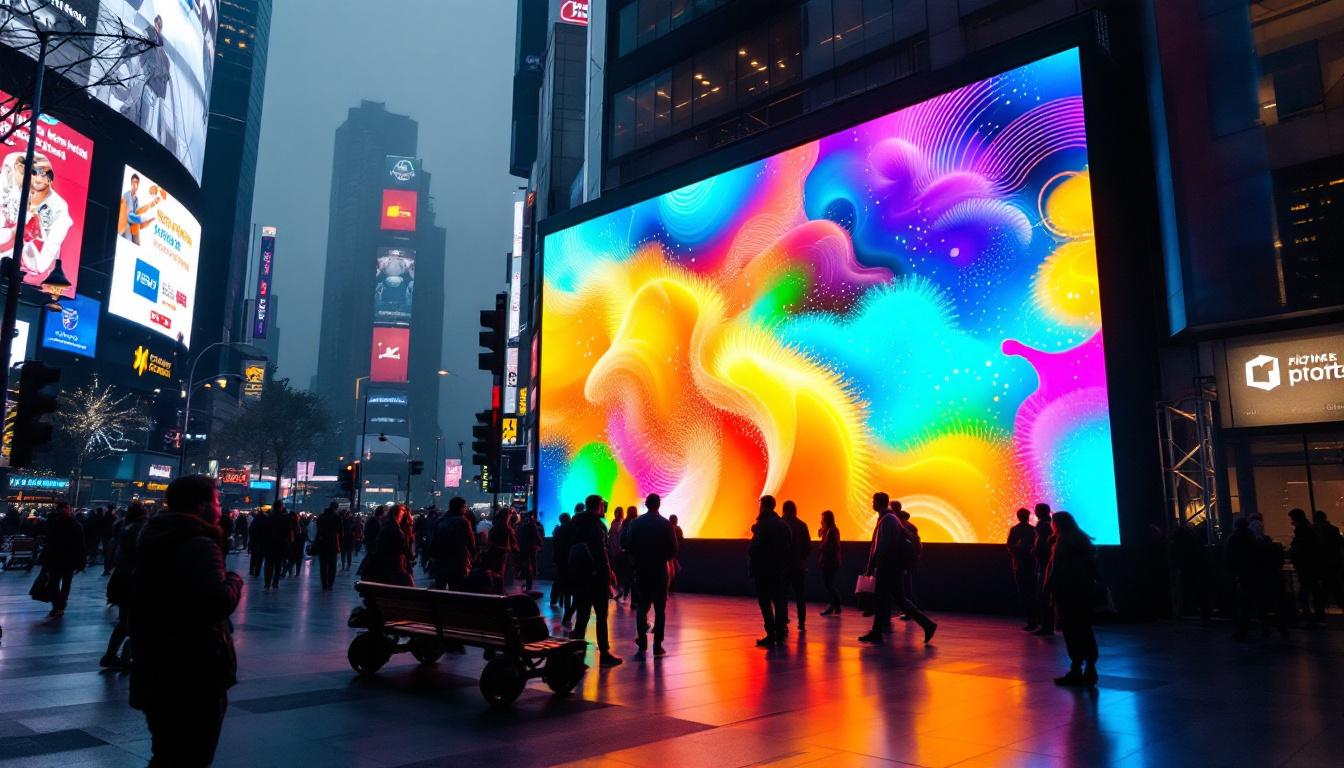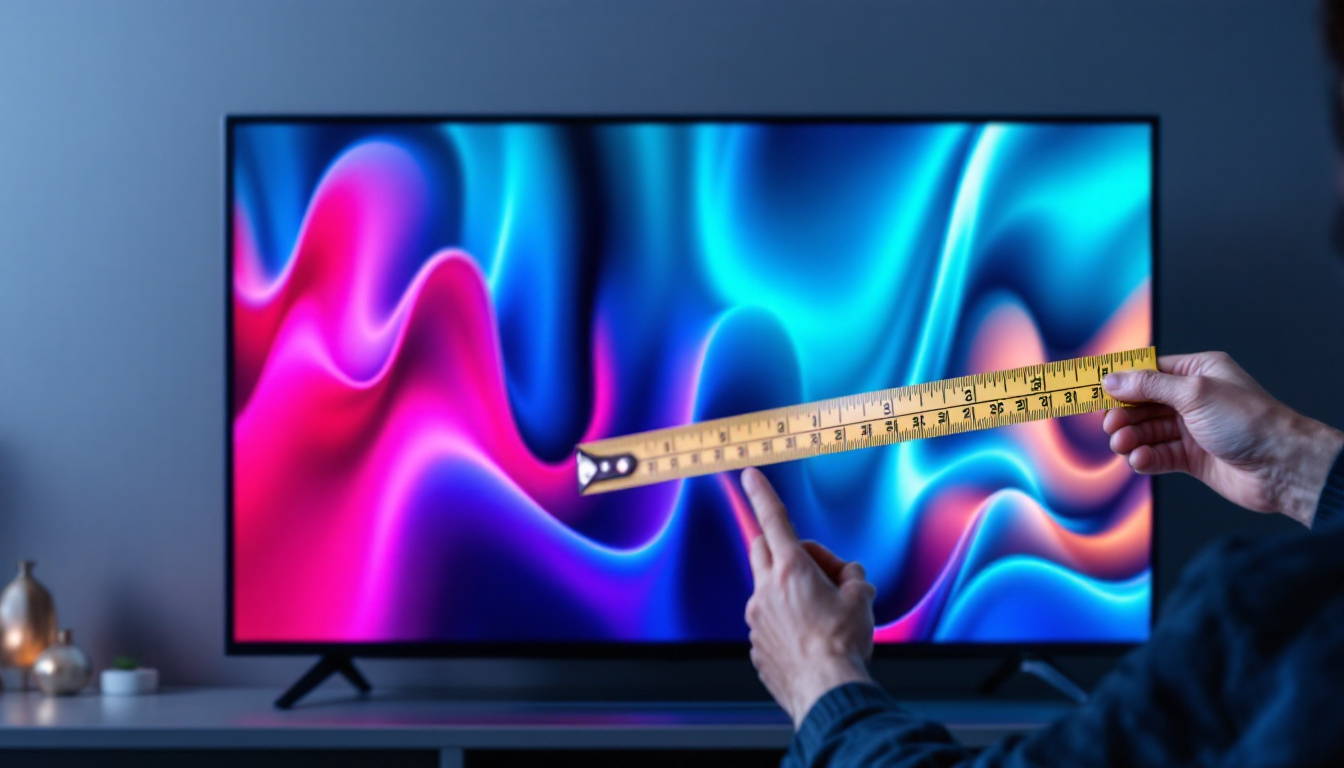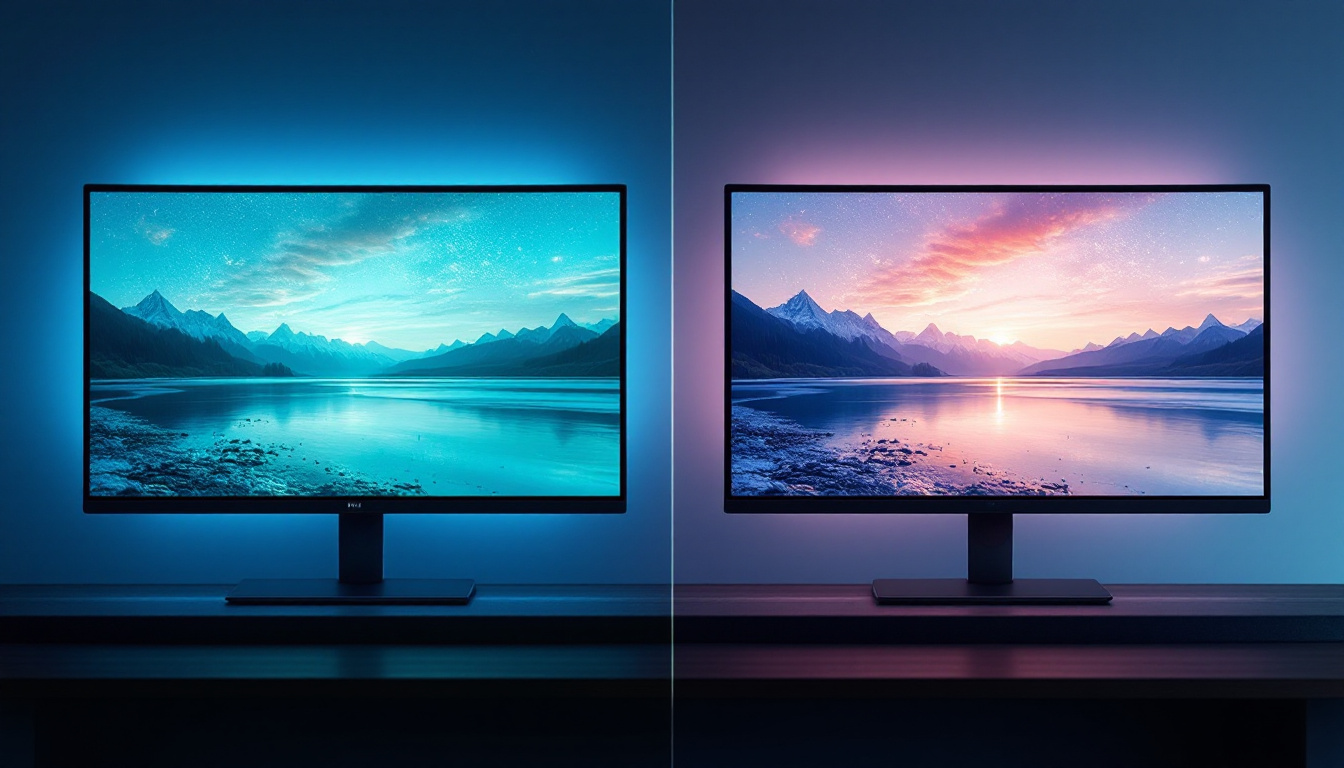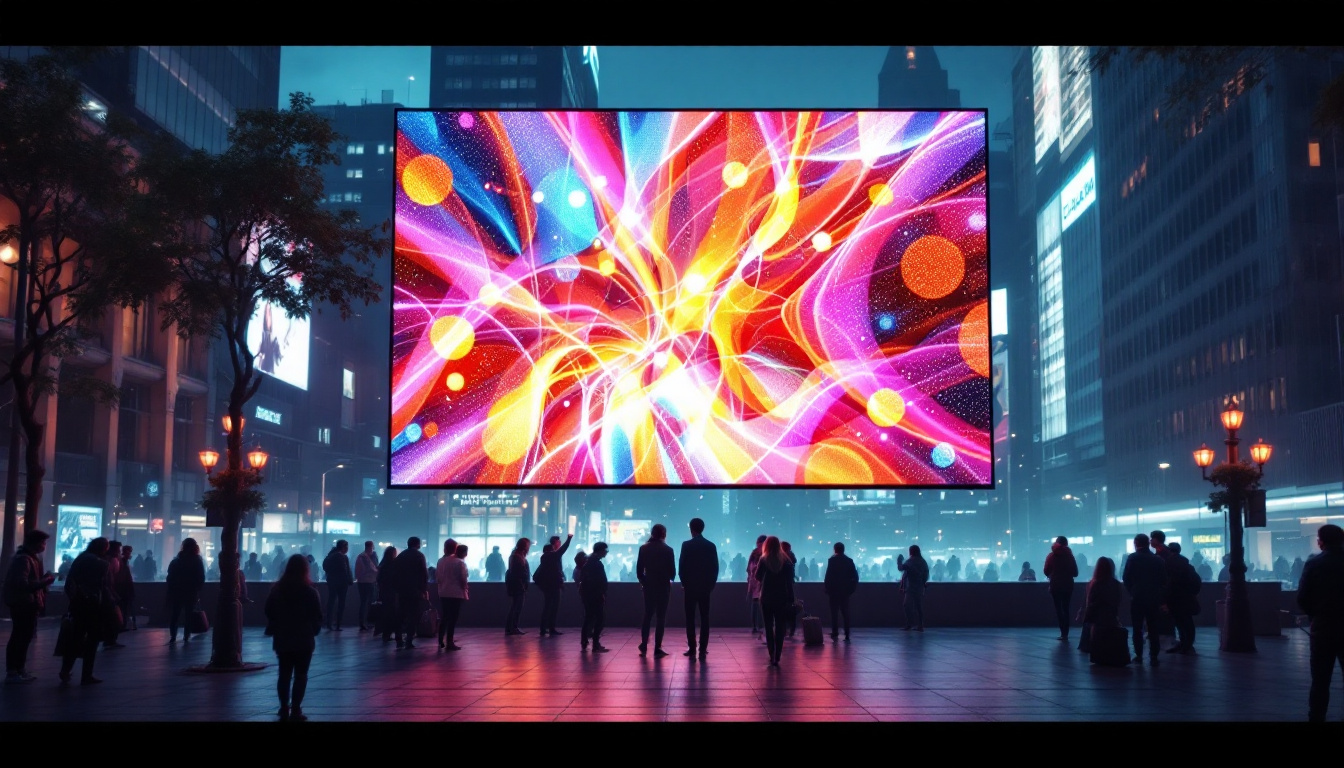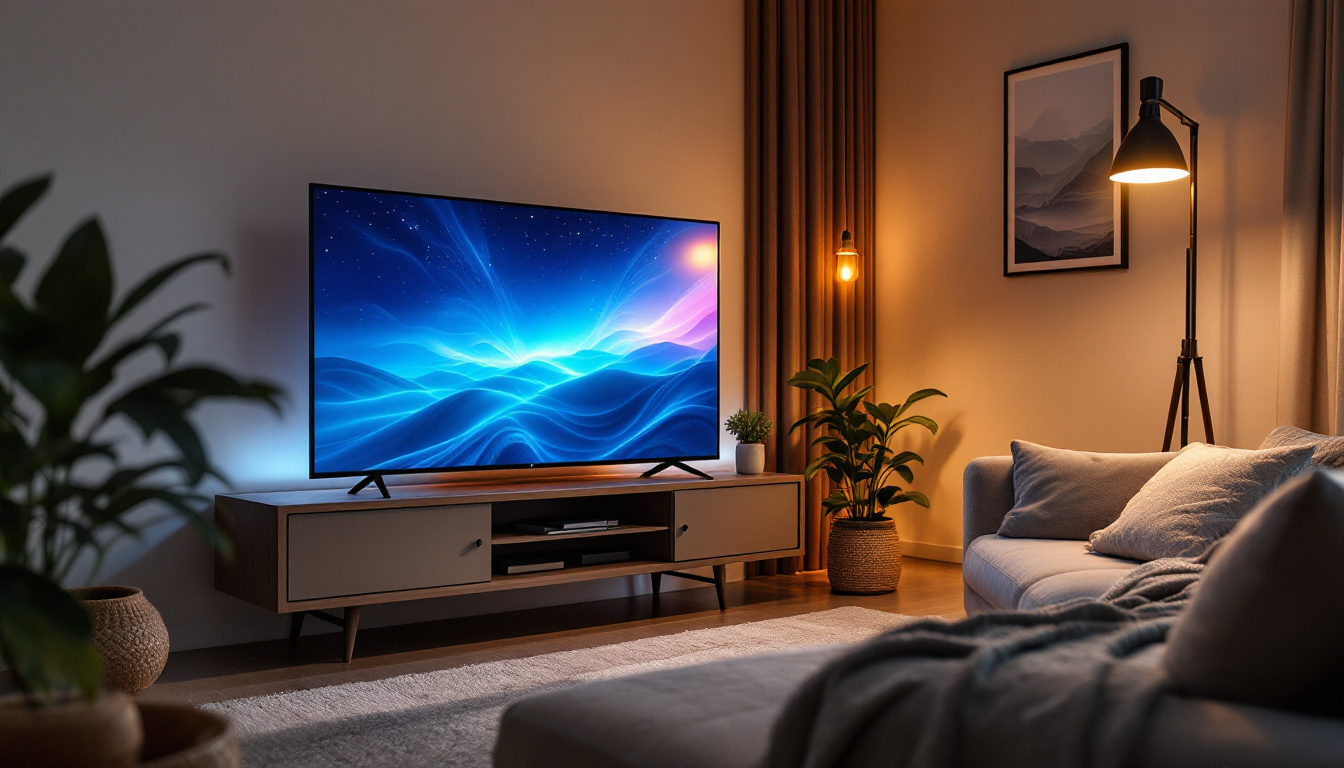In the realm of modern television technology, LED displays have emerged as a dominant force, offering superior image quality and energy efficiency. Understanding how LED displays work, their advantages, and the various types available can help consumers make informed decisions when purchasing a new television. This article delves into the intricacies of LED displays, exploring their technology, benefits, and considerations for potential buyers.
Understanding LED Technology
LED, or Light Emitting Diode, technology has revolutionized the way images are displayed on screens. Unlike traditional LCD screens that use fluorescent backlighting, LED displays utilize small diodes that emit light when an electric current passes through them. This fundamental difference in technology contributes to the superior performance of LED televisions. The shift to LED technology has not only improved the quality of images but has also led to energy savings, making it a more environmentally friendly option compared to its predecessors.
How LED Displays Work
At the core of an LED display is a matrix of tiny diodes that can emit various colors. These diodes are arranged in clusters, and by adjusting the intensity of each diode, the display can create a wide range of colors and brightness levels. This technology allows for more vibrant images and deeper blacks compared to older display technologies. The precision with which these diodes can be controlled is a key factor in achieving high dynamic range (HDR) content, which enhances the visual experience by providing more detail in both the shadows and highlights of an image.
LED displays can be categorized into two main types: edge-lit and full-array. Edge-lit LED displays have LEDs positioned along the edges of the screen, which allows for a thinner design but can sometimes result in uneven brightness. Full-array LED displays, on the other hand, have a grid of LEDs behind the screen, providing more uniform lighting and better contrast ratios. Moreover, advancements in local dimming technology have further improved full-array displays by allowing specific areas of the screen to dim or brighten independently, enhancing the overall picture quality and depth.
The Role of Color and Brightness
Color accuracy and brightness are critical factors in the performance of an LED display. The ability to produce a wider color gamut enhances the viewing experience, making images appear more lifelike. Additionally, higher brightness levels allow for better visibility in well-lit environments, making LED televisions suitable for various viewing conditions. The integration of technologies such as Quantum Dot and OLED further enhances color reproduction, allowing for richer and more saturated colors that can captivate viewers.
Furthermore, the advancements in LED technology have led to the development of smart TVs that incorporate LED displays with integrated software and internet connectivity. This allows users to access streaming services, browse the web, and even control their smart home devices directly from their televisions. The combination of high-quality LED displays with smart technology creates an immersive viewing experience that caters to the modern consumer’s needs, making entertainment more accessible and enjoyable than ever before.
Advantages of LED Displays
LED displays offer numerous advantages that make them a popular choice among consumers. From energy efficiency to superior image quality, these benefits contribute to their widespread adoption in homes and commercial settings alike.
Energy Efficiency
One of the most significant advantages of LED displays is their energy efficiency. Compared to traditional LCD and plasma screens, LED televisions consume less power, which translates to lower electricity bills. This energy efficiency not only benefits consumers financially but also has a positive impact on the environment.
Image Quality
When it comes to image quality, LED displays excel in several areas. The contrast ratios are typically higher, resulting in deeper blacks and brighter whites. This capability allows for a more dynamic range of colors and improved detail in both bright and dark scenes. Furthermore, many LED displays come equipped with advanced technologies such as HDR (High Dynamic Range), which enhances the viewing experience by providing a broader spectrum of colors and improved brightness levels.
Longevity and Durability
LED displays are known for their longevity and durability. With a lifespan that can exceed 50,000 hours, these televisions can provide years of reliable performance. Additionally, the solid-state nature of LEDs makes them less susceptible to damage compared to older display technologies, which often relied on fragile components.
Types of LED Displays
There are several types of LED displays available on the market, each catering to different preferences and needs. Understanding these options can help consumers choose the right television for their specific requirements.
Edge-Lit LED Displays
Edge-lit LED displays are designed with LEDs positioned around the perimeter of the screen. This design allows for a slim profile, making these televisions ideal for wall mounting. However, while they are energy-efficient and lightweight, edge-lit displays may experience issues with uniform brightness and contrast, particularly in darker scenes.
Full-Array LED Displays
Full-array LED displays feature a grid of LEDs directly behind the screen. This configuration allows for more precise control over local dimming, resulting in improved contrast and overall image quality. Full-array displays tend to be bulkier than edge-lit models, but they provide a superior viewing experience, especially in dimly lit environments.
OLED and QLED Technologies
While technically not LED displays, OLED (Organic Light Emitting Diode) and QLED (Quantum Dot LED) technologies are often compared to traditional LED displays. OLED screens offer exceptional color accuracy and contrast ratios, as each pixel emits its own light. QLED, on the other hand, uses quantum dot technology to enhance brightness and color, providing a vibrant viewing experience. Both technologies have their advantages and disadvantages, making them worthy alternatives to consider.
Considerations When Buying an LED Display
Choosing the right LED display involves more than just selecting a brand or model. Various factors should be considered to ensure that the chosen television meets the viewer’s needs and preferences.
Screen Size
Screen size is one of the most critical factors to consider when purchasing an LED display. The ideal size depends on the viewing distance and the size of the room. Generally, larger screens are better suited for spacious living areas, while smaller screens may be more appropriate for bedrooms or smaller spaces. It is advisable to measure the viewing distance and refer to size recommendations to find the perfect fit.
Resolution
Resolution plays a significant role in image clarity and detail. LED displays come in various resolutions, including Full HD (1080p), 4K (2160p), and even 8K (4320p). Higher resolutions provide more pixels, resulting in sharper images. For most consumers, 4K resolution is becoming the standard, offering a great balance between quality and availability of content.
Smart Features
Many modern LED displays come equipped with smart features, allowing users to access streaming services, browse the internet, and use apps directly from their television. When considering a new LED display, it is essential to evaluate the smart features offered, including compatibility with popular streaming platforms and the user interface’s ease of use.
Maintaining Your LED Display
Proper maintenance can extend the lifespan of an LED display and ensure optimal performance. Following a few simple guidelines can help keep the television in excellent condition.
Regular Cleaning
Dust and smudges can accumulate on the screen, affecting image quality. Regularly cleaning the display with a microfiber cloth can help maintain clarity. It is essential to avoid using harsh chemicals or abrasive materials, as these can damage the screen. Instead, a gentle solution of water and vinegar can be used for deeper cleaning.
Optimal Settings
Adjusting the settings on the LED display can significantly enhance the viewing experience. Many televisions come with preset modes for different types of content, such as movies, sports, or gaming. Experimenting with these settings can help find the ideal balance of brightness, contrast, and color saturation for various viewing environments.
Software Updates
For smart LED displays, keeping the software up to date is crucial for optimal performance. Manufacturers often release updates that improve functionality, fix bugs, and enhance security. Regularly checking for updates ensures that the television operates smoothly and remains compatible with the latest streaming services and apps.
The Future of LED Technology
The future of LED technology looks promising, with continuous advancements paving the way for even more innovative displays. As technology evolves, consumers can expect improvements in energy efficiency, image quality, and overall user experience.
MicroLED Technology
MicroLED is an emerging technology that promises to take LED displays to the next level. MicroLED panels consist of tiny, individual LEDs that can produce their own light, similar to OLED technology. This advancement offers the potential for even better contrast ratios, color accuracy, and energy efficiency. As MicroLED technology matures, it may become a viable alternative to both OLED and traditional LED displays.
Integration with Smart Home Systems
As smart home technology continues to grow, the integration of LED displays with home automation systems is becoming increasingly common. Future LED televisions may feature advanced connectivity options, allowing users to control lighting, security, and other smart devices directly from their television. This seamless integration could enhance the overall viewing experience and simplify home management.
Enhanced Gaming Experiences
With the rise of gaming as a primary form of entertainment, LED displays are evolving to meet the demands of gamers. Features such as higher refresh rates, lower input lag, and advanced gaming modes are becoming standard in many new models. As gaming technology advances, LED displays will likely continue to adapt, providing immersive experiences for players.
Conclusion
LED displays have transformed the way people experience television, offering superior image quality, energy efficiency, and a range of features that enhance the viewing experience. Understanding the technology behind LED displays, their advantages, and the various types available can empower consumers to make informed decisions when purchasing a new television. As technology continues to evolve, LED displays will remain at the forefront of the television market, providing viewers with exceptional entertainment experiences for years to come.
Discover LumenMatrix’s Advanced LED Display Solutions
Ready to elevate your viewing experience with the latest in LED display technology? Look no further than LumenMatrix, a pioneer in crafting immersive visual displays that bring your content to life. Whether you’re seeking to enhance your brand’s presence with an Indoor LED Wall Display, captivate passersby with an Outdoor LED Wall Display, or innovate with Custom LED Display solutions, LumenMatrix has you covered. Embrace the future of visual communication and check out LumenMatrix LED Display Solutions today to see how we can transform your space with clarity and impact.

